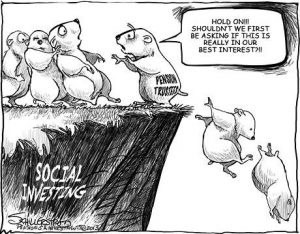When talking about “Internet Giants”, who would first be popped up in your mind?
Google and Facebook, two household names, have made changes to their news sites recently that millions of users might not be aware of. Facebook starts to display the logos and identify sources of some of the articles on its News Feed while Google gives its users the power to control the number of free visits they have for news publishers sites. Both Google and Facebook not only upgrade their services to better serve the public, but also formally collaborate with different news publishers to firm their internet status. At the same time, news publishers gain millions of visits through this channel, as well as increasing the subscriptions that they can barely get before. It seems to be a fair cooperation and win-win situation. However, the fact is not.
 Data have shown that, instead of saying “I read this on XX website”, readers are more likely to tell people that they read the news on Facebook. In addition, Google’s promotion of free accesses have brought almost 50% decline to some of the news sites. Although the publishers can somewhat benefit from the advertisements, most of the revenues are still taken by Google and Facebook.
Data have shown that, instead of saying “I read this on XX website”, readers are more likely to tell people that they read the news on Facebook. In addition, Google’s promotion of free accesses have brought almost 50% decline to some of the news sites. Although the publishers can somewhat benefit from the advertisements, most of the revenues are still taken by Google and Facebook.
Who dominates in this act is obvious. These tech giants don’t grow for no reasons. They are apparently fed by their strategies. As for Facebook, it claims to help develop the news industry on media by displaying the logos, whereas it ends up collecting all the money into its own pocket. On the other side, Google successfully promotes its “value” of bringing convenience to the public which lets people access to what they want to see without paying money, “eventually” getting itself to become the biggest beneficiary in the game. They target the customers so well, delivering the right messages with proper methods. Most readers don’t care about the originality of the sources as long as they have the access and it’s free of charge. Despite the fact that Google and Facebook are destroying internet ecosystem by their “duopoly”, news publishers have no other choices but to collaborate with them because of their influence to the technological world.
This “duopoly” also sets a tremendously high barrier for new firms to even enter into the media market. It is a positive sign for Google and Facebook themselves, but not for the overall development of the industry. More competitions would bring more innovations and advancements. As technology gradually dominates our world of living, there should be some breakthrough points.

Word Count: 423
*All pictures above are hyperlinked.



 In
In 




